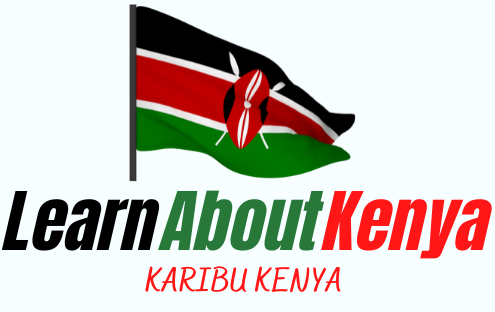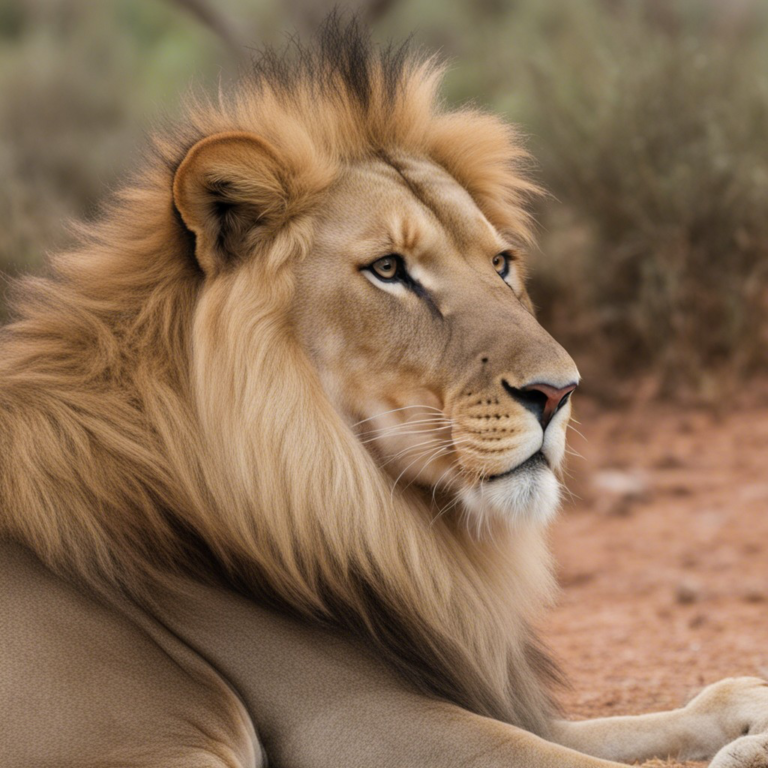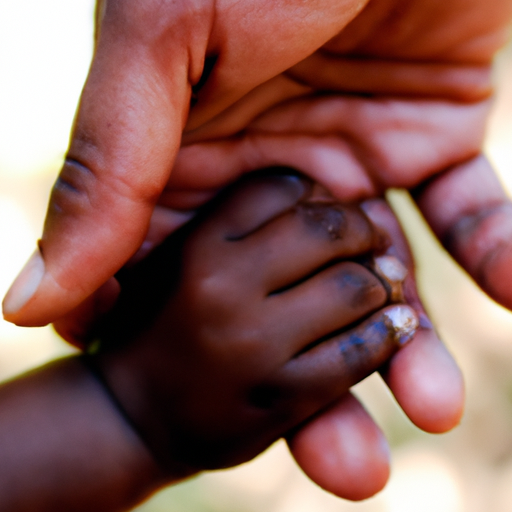What Are Some Traditional Kenyan Healing Practices?
Are you curious about the traditional healing practices of Kenya? In this article, we will explore some fascinating aspects of Kenyan culture and delve into the rich traditions that have been passed down through generations. From natural remedies to spiritual rituals, the healing practices in Kenya offer a unique perspective on healthcare that is deeply rooted in their history and cultural beliefs. Whether you are seeking alternative treatments or simply interested in learning about different cultures, join us on this journey as we uncover the traditional Kenyan healing practices that continue to thrive today.
Divination
Using divination tools
In traditional Kenyan healing practices, divination is often used as a means of seeking guidance, understanding, and insight into one’s life. Various tools are employed to perform divination, such as bones, stones, shells, or even tea leaves. These tools are carefully chosen and treated as sacred objects, believed to possess the power to reveal hidden truths and connect with the spiritual realm. By throwing or casting the divination tools and interpreting their patterns, a diviner is able to unveil information about the past, present, and future.
Consulting a diviner
When faced with difficult decisions, uncertainties, or challenges, many Kenyans turn to diviners for guidance. Diviners are highly respected individuals who have acquired the necessary knowledge and skills to interpret the messages conveyed through divination tools. Seeking the help of a diviner is often viewed as a way to gain clarity, reassurance, and direction. These practitioners are seen as mediators between the physical and spirit worlds, providing valuable insights that can shape the course of one’s life.
Interpreting the results
The interpretation of divination results requires a deep understanding of symbolism, patterns, and cultural contexts. Diviners possess this expertise, allowing them to decipher the messages conveyed through the divination tools. The results are not always straightforward and require careful analysis to uncover their true meaning. Diviners rely on intuition, spiritual knowledge, and their connection with the spiritual realm to interpret the messages accurately. The guidance provided by the diviner is considered essential for making informed decisions and navigating life’s challenges.
Herbal Medicine
Gathering medicinal plants
Herbal medicine has long been a significant aspect of Kenyan healing practices. Gathering medicinal plants involves identifying and collecting specific plants known for their healing properties. This process requires extensive knowledge of local flora and their medicinal uses. Traditional healers often pass down this knowledge through generations, ensuring the preservation of valuable herbal remedies. With great respect for nature, healers select plants in environmentally sustainable ways, ensuring the sustainability of resources for future generations.
Preparing herbal remedies
Once the medicinal plants have been gathered, the traditional healer carefully prepares herbal remedies. This involves various techniques such as drying, grinding, and mixing the plants to create potent concoctions or poultices. Each step is carried out with precision and reverence, acknowledging the healing power that lies within these natural ingredients. The preparation methods may vary depending on the specific ailment being treated, ensuring that the herbal remedies are tailored to address individual health needs.
Administering herbal treatments
Herbal treatments are administered in different ways depending on the nature of the illness or condition. Traditional healers may prescribe herbal teas, tinctures, ointments, or baths for specific ailments. The dosage and duration of treatment are carefully determined based on the patient’s needs. The belief in the interconnectedness of the physical, mental, and spiritual aspects of health guides the healer’s approach, ensuring a holistic treatment experience for the individual seeking traditional herbal medicine.
Spiritual Healing
Calling upon ancestral spirits
In traditional Kenyan healing practices, ancestral spirits hold great significance in the spiritual healing process. Traditional healers often invoke and communicate with these ancestral spirits to seek guidance, healing, and protection. The belief is that these spiritual beings have a profound connection to the living and can provide assistance in restoring balance and harmony to an individual’s life. Rituals and ceremonies are conducted to establish a connection with the ancestral spirits, setting the stage for spiritual healing to take place.
Performing rituals and ceremonies
Rituals and ceremonies are integral components of spiritual healing in Kenya. These practices serve as a means of honoring the ancestors, seeking their blessings, and invoking their presence. Through the use of sacred objects, incantations, and music, traditional healers create a sacred space in which spiritual healing can occur. These rituals are often tailored to address specific concerns or ailments, with the intention of restoring both physical and spiritual well-being.
Offering prayers and sacrifices
Prayers and sacrifices play a central role in traditional Kenyan spiritual healing. The act of offering prayers is a way of expressing gratitude, seeking divine intervention, and asking for healing. Sacrifices, such as offering food, livestock, or other valuable items, are made as a gesture of devotion and appeasement to the spiritual realm. These offerings are believed to facilitate the healing process by establishing a deeper connection between the individual seeking healing and the spiritual forces at work.
Massage and Bodywork
Oiling and kneading techniques
Massage and bodywork techniques have long been used in traditional Kenyan healing practices to promote relaxation, relieve tension, and improve overall well-being. Oiling and kneading are common techniques employed by traditional healers. Organic oils, often infused with medicinal herbs, are carefully applied to the body, allowing the hands of the healer to glide smoothly over the skin. Kneading techniques involve rhythmic and deliberate movements that target specific areas of the body, releasing muscular tension and promoting a sense of rejuvenation and balance.
Using traditional tools
Traditional tools are also utilized in massage and bodywork practices. These tools can include wooden sticks, stones, or even bamboo canes. The tools are used to apply pressure and stimulate specific acupressure points, meridians, or energy pathways in the body. The combination of manual techniques and the use of traditional tools enhances the therapeutic benefits of the massage and bodywork session, promoting physical and energetic healing.
Focusing on energy pathways
Traditional Kenyan healing practices recognize the importance of energy flow in maintaining health and well-being. Traditional healers focus on balancing the body’s energy pathways, also known as meridians. By applying techniques that target specific points along these pathways, they aim to remove blockages, restore the smooth flow of energy, and promote overall vitality. This holistic approach to massage and bodywork acknowledges the interconnectedness of the physical, emotional, and spiritual aspects of the individual.
Scarification
Purpose of scarification
Scarification is a traditional practice that involves intentionally creating scars on the skin for various purposes. In Kenyan culture, scarification holds significant cultural and spiritual importance. It is often performed as a rite of passage, marking important life transitions such as reaching adulthood or marriage. Scarification can also serve as a form of body decoration, symbolizing cultural identity, social status, or even spiritual protection. The designs and patterns created through scarification are deeply rooted in tradition and carry cultural symbolism.
Traditional methods and tools
Traditional methods and tools are used in the process of scarification. Common tools include knives, razors, or sharp objects that are meticulously selected and sterilized to minimize the risk of infection. The scars are created by making incisions in the skin, often following intricate patterns or designs. Traditional healers who specialize in scarification possess the required skill and knowledge to ensure the process is carried out safely and with precision.
Symbolism and cultural significance
Scarification is rich in cultural symbolism and significance within Kenyan communities. The patterns and designs created through scarification can convey messages about lineage, tribe, personal achievements, or spiritual beliefs. These scar patterns are unique to each individual and serve as a form of personal identification and cultural expression. The scars are often considered a source of pride and are cherished as a physical representation of one’s cultural heritage and identity.
Bone Setting
Diagnosing and treating bone ailments
Bone setting is a traditional healing practice that involves diagnosing and treating various bone ailments and injuries. Traditional healers, known as bone setters, possess an in-depth understanding of the body’s skeletal system and its healing processes. By carefully examining the affected area, bone setters can assess the nature and extent of the injury or ailment. This allows them to develop personalized treatment plans tailored to the individual’s needs, using a combination of manual techniques, natural remedies, and spiritual guidance.
Manipulating the bones
Bone setters employ various techniques to manipulate and realign bones. These techniques can involve gentle manipulation, stretching, or applying traction to the affected area. The goal is to restore proper alignment, alleviate pain, and facilitate the body’s natural healing ability. Traditional healers rely on their extensive knowledge of anatomy, acquired through generations of oral tradition and practical experience, to ensure the safety and effectiveness of bone-setting practices.
Using natural remedies
In conjunction with bone manipulation, traditional healers often employ natural remedies to support the healing process. These remedies can include herbal poultices, medicinal baths, or topical ointments specifically formulated to promote bone health and regeneration. The use of natural remedies is rooted in the belief that the body possesses innate healing abilities and can be supported through the power of nature. The combination of bone manipulation and natural remedies provides a holistic approach to bone healing in traditional Kenyan practices.
Cupping Therapy
Creating suction with cups
Cupping therapy is a traditional healing technique that involves creating suction on specific points of the body using cups. In traditional Kenyan practices, the cups are often made of materials such as gourds or glass. The cups are warmed, creating a vacuum effect when placed on the skin. This suction draws blood flow to the area, promoting circulation and stimulating the body’s natural healing response. The suction can be adjusted to vary the intensity and duration of the therapy based on the individual’s needs.
Placement on specific points
The cups are strategically placed on specific points of the body, known as acupuncture points or energy meridians. Traditional healers possess a thorough understanding of these points and their corresponding therapeutic benefits. By targeting these points, cupping therapy aims to alleviate pain, reduce inflammation, and promote overall well-being. The cups may be left in place or moved along the meridians to further enhance the therapeutic effects.
Benefits and healing effects
Cupping therapy offers a range of benefits and healing effects. It is believed to stimulate the lymphatic system, aiding in detoxification and immune function. The increased blood flow and circulation can help reduce muscle tension, promote relaxation, and alleviate pain. Cupping therapy is also thought to improve the flow of Qi, the body’s vital energy, bringing balance and harmony to the individual. This traditional practice has gained recognition worldwide for its ability to enhance physical, mental, and emotional well-being.
Music and Dance
Role of music and dance in healing
Music and dance hold a significant role in traditional Kenyan healing practices. They are seen as powerful tools for healing and spiritual connection. Traditional instruments, such as drums, rattles, and flutes, are used to create rhythmic beats and melodies that resonate deeply within individuals. The captivating sounds and infectious rhythms serve to uplift the spirits, promote emotional release, and induce a trance-like state conducive to healing. Dance is also an integral part of the healing process, allowing individuals to express themselves, connect with their bodies, and release stagnant energy.
Traditional instruments and songs
Traditional Kenyan healing practices incorporate a wide variety of instruments and songs. Drums are particularly revered for their ability to communicate with the spirit world and evoke powerful emotions. The rhythmic beats of the drumming synchronize with the heartbeat, creating a profound connection to the individual’s essence. Rattles and flutes are also used, each with their unique sound and purpose. The songs sung during healing rituals are often passed down through generations, carrying the wisdom and healing powers of ancestral spirits.
Trance states and healing rhythms
Music and dance in traditional Kenyan healing practices aim to induce trance states, altering consciousness and allowing individuals to connect with deeper levels of being. In these altered states, individuals may experience visions, receive insights, or access heightened states of awareness. The healing rhythms generated by the music and dance serve as a catalyst for transformative experiences, facilitating emotional healing, and spiritual growth. This unique combination of music, dance, and trance states allows individuals to access their inner wisdom and find healing on a profound level.
Meditation and Mindfulness
Quiet contemplation practices
Meditation and mindfulness are integral practices in traditional Kenyan healing. These practices involve quiet contemplation, allowing individuals to turn their attention inward and cultivate a state of stillness and awareness. Traditional healers guide individuals through various meditation techniques, encouraging them to focus on their breath, thoughts, or sensations. These practices promote self-reflection, introspection, and a deep connection to one’s inner self.
Focus on breath and inner peace
Breathing techniques play a central role in meditation and mindfulness practices. By focusing on the breath, individuals cultivate a sense of calm, relaxation, and inner peace. Traditional healers emphasize the importance of deep, slow, and intentional breathing, guiding individuals to synchronize their breath with their movements, thoughts, or emotions. Through the cultivation of mindful breathing, individuals can anchor themselves in the present moment, release stress, and attain a profound sense of tranquility.
Training the mind for healing
Meditation and mindfulness practices in traditional Kenyan healing aim to train the mind for healing through self-awareness and introspection. By cultivating a non-judgmental and compassionate attitude towards oneself, individuals can explore their thoughts, emotions, and sensations with acceptance and kindness. This process of self-discovery and self-compassion allows individuals to identify and release inner blockages, negative patterns, and emotional trauma, creating space for healing and transformation to occur.
Fasting and Purification
Cleansing the body and spirit
Fasting and purification practices are an integral part of traditional Kenyan healing rituals. These practices aim to cleanse the body and spirit, removing toxins and negative energies. Fasting involves voluntarily abstaining from solid food or certain types of food for a specified period. This period of abstinence allows the body to rest, detoxify, and rejuvenate. In addition to fasting, purification rituals may include herbal baths, smoke ceremonies, or cleansing rituals performed by traditional healers. These practices are seen as a way to purify the individual’s energy and restore balance.
Water fasting and herbal baths
Water fasting is a common fasting practice in traditional Kenyan healing. During this period, individuals consume only water, allowing the body to expel toxins and stimulate the healing process. The duration of water fasting varies depending on individual needs and the guidance of traditional healers. Herbal baths are often used as an additional purification method. Infusions of medicinal herbs are added to bathwater, providing a deep cleansing experience for the body and spirit. These herbal baths promote relaxation, rejuvenation, and energetic renewal.
Reconnecting with one’s inner self
The practice of fasting and purification in traditional Kenyan healing serves as an opportunity for individuals to reconnect with themselves on a deeper level. Through the release of physical and energetic toxins, individuals create space for self-reflection, introspection, and spiritual growth. Traditional healers guide individuals through this process, offering support and spiritual guidance. The focus on reconnecting with one’s inner self allows for the cultivation of self-awareness, increased clarity, and a renewed sense of purpose, ultimately fostering holistic healing and well-being.
In conclusion, traditional Kenyan healing practices encompass a wide range of modalities, each offering unique approaches to healing the body, mind, and spirit. From divination and herbal medicine to spiritual healing and purification rituals, these practices reflect a deep respect for nature, the interconnectedness of all aspects of life, and the wisdom of ancestral knowledge. Through the utilization of traditional tools, rituals, and techniques, traditional healers in Kenya provide individuals with holistic healing experiences that promote balance, harmony, and well-being. Embracing their rich cultural heritage, Kenyans continue to turn to these traditional healing practices as integral aspects of their personal and communal health journeys.






